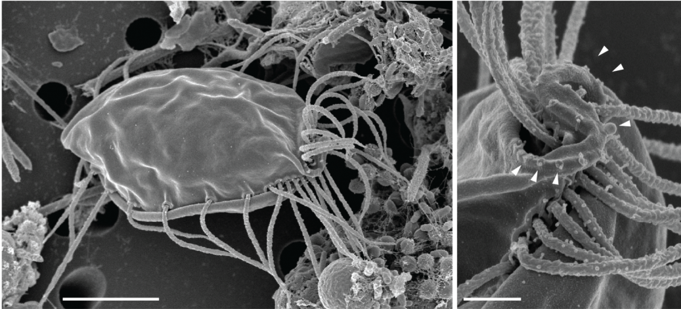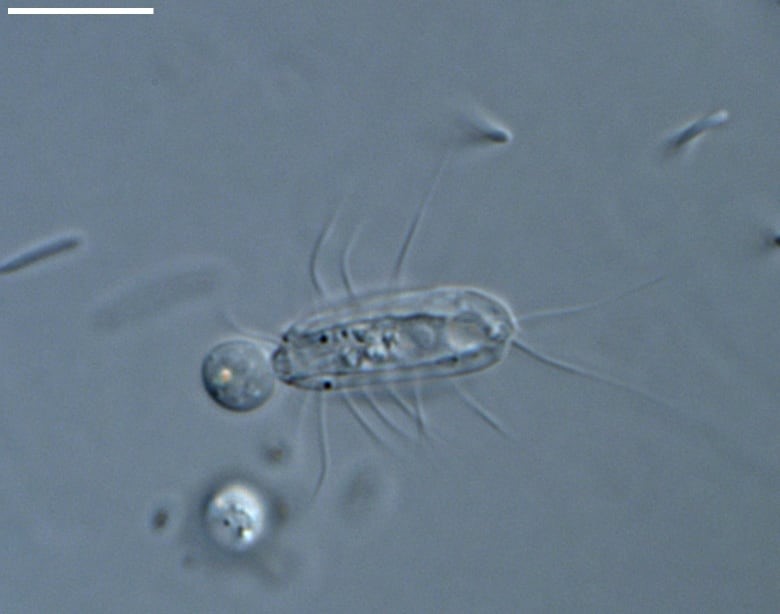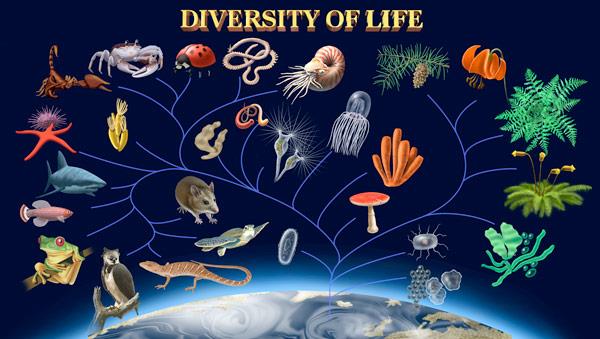Imagine going on a walk in the woods and stumbling on a new microbe so different from all other life on earth that it would baffle taxonomists. That’s what happened to Yana Eglit, a graduate student at Dalhousie University, Nova Scotia.
Eglit collected some seemingly ordinary dirt on her hike and discovered a microbe that could redefine all that we know about evolution of life! It’s a newly discovered species that fits under the Hemimastigotes, first documented in the 19th century. Ever since then, this group of organisms did not have a spot on the tree of life but now, with the newly found species, that can change.
The Hairy Ogre
The new microbe was named after a mythological hairy ogre, Hemimastix kukwesjijk, and it sure looks like one! Made up of only a single cell, its body is only about two-hundredth of a millimeter, making it too small to see with the naked eye. Below is an image of it taken with an electron microscope. On the right is its mouth and all around the sides it has multiple tentacle-like projections, called flagella.

General view of cell with detail of the capitulum by Lax et al. (2018)
It feeds by reaching and capturing its prey (other microbes) with its flagella, bringing it to its mouth and sucking the insides out. That sure sounds like a creation from an alien movie!

Hemimastix kukwesjijk feeds on its prey by Yana Eglit/Nature
Though possible benefits of this new species has yet to be studied, microbes are used in food, medicine, and water treatment so the Hemimastix could prove to be useful to us too.
Retracing the Tree of Life
Almost immediately after the discovery, scientists analyzed the microbe’s genetic makeup and found it to be so unique that it can form its own “supra-kingdom”. Animals and fungi fit into the same supra-kingdom, meaning that people and mushrooms are more similar to each other than they are to this organism.
The Hemimastix has a complex cell structure making it a eukaryote, just like humans! However, they don’t quite fit into any of the existing Eukaryotic domains. “This discovery literally redraws our branch of the ‘Tree of Life’ at one of its deepest points” said Alastair Simpson, professor and lead author of the study.
Further studies on this microbe can shed light on the evolutionary history of all life on earth. Looking at organisms present here today, especially simple microbes like this, can aid in understanding how life was shaped over billions of year. And this is just one piece of a puzzle!

Diversity of Life by Highland Lakes School
“That such a distinct form of life could be hiding literally under our feet is a sharp reminder about how little we still know about the diversity of life on Earth.” says Dr. Simpson.
So next time you’re feeling lonely, just think about all the life that surrounds you, microbes and other. A lot of it yet to be discovered!
-Polina Orlov
